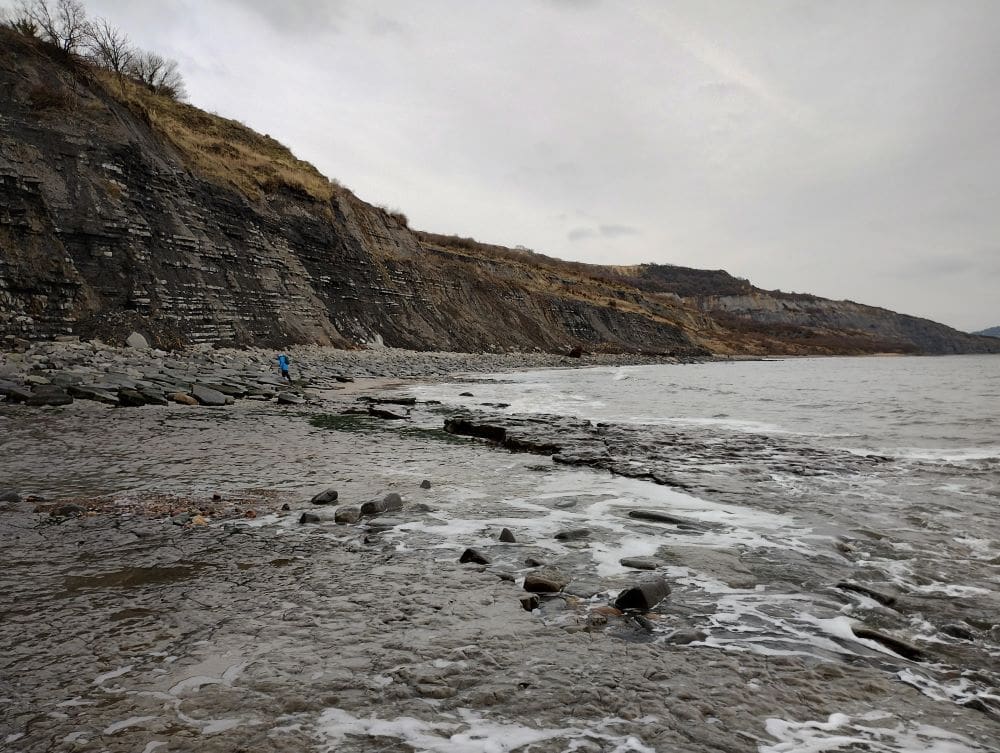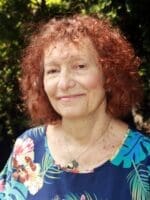EXCERPT from part of CHAPTER 5 of Jurassic Girl
Author’s note for this excerpt: This is Mary Anning’s first visit to Elizabeth Philpot’s home. Philpot (1779 – 1857) was an amateur paleontologist in the seaside town of Lyme Regis, Dorsett, U.K. She and Mary spent time together fossil hunting.
 “Look at all these books!” Mary exclaimed. “And I see you have newsletters from the London Geological Society going back a number of years up to the present. When we first met, you mentioned all of the discoveries recorded in the newsletters focus only on what men found. Is that true? Not one mention of women’s or girls’ contributions?”
“Look at all these books!” Mary exclaimed. “And I see you have newsletters from the London Geological Society going back a number of years up to the present. When we first met, you mentioned all of the discoveries recorded in the newsletters focus only on what men found. Is that true? Not one mention of women’s or girls’ contributions?”
“That’s true. Even though they don’t see us as experts, we can still learn from the information in these newsletters. Feel free to browse.”
“Well, we’ll have to prove them wrong.”
“Are you hungry? We could go into the kitchen and get some food.”
“And leave here? No, I never want to leave here.”
“Let’s get something to eat, and then you can explore.”
What Mary really wanted to do was to look through every book in the library. [Her dog] Tray stayed by her side until Elizabeth filled a bowl with chopped chicken meat and placed it on the tiled kitchen floor for him. Tray licked the bowl clean.
“I know you’re eager to get back to the library,” Elizabeth said. “I have an idea.”
She rummaged through the baskets, pulled out a few fossils, and placed them on a newspaper she spread across the desk. “I’ve been reading about these,” Elizabeth said. “The London Geological Society says they’re quite common and are found in many places throughout the world. I believe we have a lot of them in Lyme Regis.”
“Here,” she said, pointing to an article in the London Geological Society’s newsletter, “it says Georges Curvier, head of the London Geological Society, believes fossils like these are millions of years old.”
“Millions of years old!” Mary repeated, her brown eyes widening. “My papa taught me to close my eyes and try to imagine what these creatures looked like when they were alive. I see them swimming in the ocean or crawling on land. To hold something in our hands that’s millions of years old is remarkable. I never tire of it.
“You’re the only girl I’ve ever met who loves learning about fossils as much as I do,” Mary continued. “So many people think I’m daft when I go on about them. Some even get mad at me because they think I’m lying; they think it’s impossible anything would die out.”
 “Extinction’s a hard concept for some,” Elizabeth said. “I try to be patient with the nonbelievers. Somedays, I’m anything but. That’s why I’m glad you’re my friend.”
“Extinction’s a hard concept for some,” Elizabeth said. “I try to be patient with the nonbelievers. Somedays, I’m anything but. That’s why I’m glad you’re my friend.”
Elizabeth picked up a fossil and held it to the light. “See the bluish-black color inside?”
“Yes. It looks like ink,” Mary said.
“Precisely,” Elizabeth answered. She went to the kitchen and came back with a glass of water and a thin paintbrush. Slowly she added a teaspoonful of water into the chamber of the fossil and swished it around with the paintbrush. The bluish-black substance loosened and took on a paste-like consistency.
“Look, Mary. See. I think this is dried ink. They’ve been out of the water for so long that the ink hardened.”
Elizabeth added a few more drops of water to get the right consistency. She then dabbed the soft end of the paintbrush into the chamber and swirled it around again, covering the rust-colored hairs of the brush completely with the blue-black ink.
“Do you paint?” Mary asked.
“Yes. I use my quill, or sometimes pastels to make images of my finds, which I send to the London Geological Society. Do you?”
“Yes. I learned watching my papa.”
Elizabeth handed her friend a sheet of plain white paper and took one for herself. She gave Mary a different paintbrush. They dabbed their paintbrushes into the liquid ink and painted pictures of the belemnite fossil, and as soon as all the ink was gone, Elizabeth added a few drops of water to the second fossil with the ink sac. “I’m sure we can find more on the beach,” Elizabeth said.
Mary and Elizabeth talked while the ink on their drawings dried. Then she rolled up the picture of the belemnite fossil, said good-bye to her friend, and walked down the hill back to her house with Tray at her side.
Excerpted with permission. From Jurassic Girl: The Adventures of Mary Anning, Paleontologist and the First Female Fossil Hunter by Michele C. Hollow (Ulysses Books for Young Readers; September 10, 2024). Pre-order now.
Photos courtesy of Michele C. Hollow.
Michele C. Hollow writes about science, health, climate, pets and wildlife for theNew York Times, Next Avenue, Leaf Score, Inside the Animal Mind, Inside Your Cat’s Mind, Inside Your Dog’s Mind, and other publications. She’s also written a handful of books for middle grade students. Hollow resides in New Jersey with her husband, Steven. They have two sons and a rescue cat named Chai. To learn more, visit herwebsite.
Oil and gas operations are commonly found in remote locations far from company headquarters. Now, it's possible to monitor pump operations, collate and analyze seismic data, and track employees around the world from almost anywhere. Whether employees are in the office or in the field, the internet and related applications enable a greater multidirectional flow of information – and control – than ever before.




